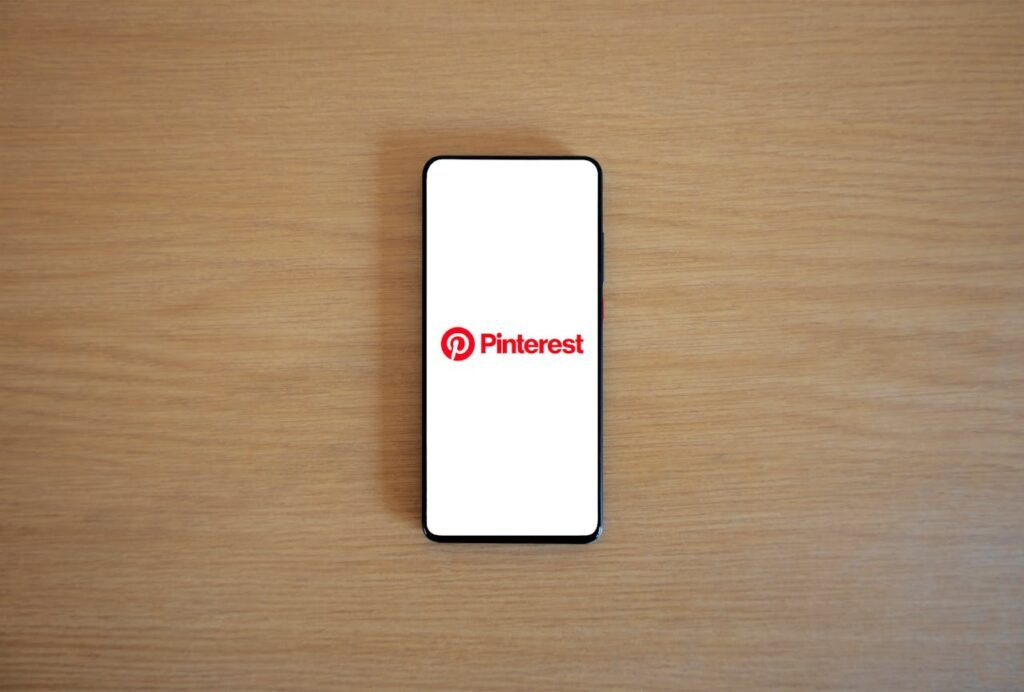Building and promoting your brand is essential for creating a strong presence in the market and connecting with your target audience. A well-defined brand sets you apart from the competition and creates loyalty among your customers. This article will explore detailed, actionable strategies for building and promoting your brand, ensuring that your business not only stands out but also thrives.
Understanding Your Brand
Conducting a Brand Audit
A brand audit is a comprehensive review of your brand’s current position in the market. This process involves evaluating your brand’s strengths, weaknesses, opportunities, and threats (SWOT analysis). Analyze your branding elements, such as your logo, tagline, and messaging, to ensure they align with your brand identity and resonate with your target audience.
Review customer feedback, social media mentions, and online reviews to understand how your brand is perceived. A thorough brand audit provides valuable insights that can guide your branding strategy and identify areas for improvement.
Differentiating Your Brand
In a competitive market, differentiating your brand is crucial for standing out. Identify what makes your brand unique and how you can leverage this uniqueness to attract customers. Consider aspects such as your product features, customer service, company values, and brand personality.
Highlight these differentiators in your marketing materials and communications. For example, if your brand is known for eco-friendly products, emphasize your commitment to sustainability in your messaging. Differentiation helps create a distinct brand identity that appeals to your target audience.
Aligning Your Brand with Market Trends
Staying updated with market trends ensures that your brand remains relevant and competitive. Monitor industry developments, consumer preferences, and emerging technologies that impact your market. Adapt your branding strategy to align with these trends while staying true to your core values.
For example, if there is a growing demand for personalization, explore ways to offer customized products or services. By aligning your brand with current trends, you demonstrate that your business is forward-thinking and responsive to customer needs.
Building Brand Consistency
Consistency is key to building a strong brand. Ensure that your branding elements, such as your logo, color scheme, typography, and messaging, are used consistently across all touchpoints. This includes your website, social media profiles, marketing materials, and customer communications.
Consistent branding reinforces your brand identity and makes it easily recognizable. Develop brand guidelines that outline the proper use of branding elements and share them with your team to maintain uniformity. Consistency builds trust and reliability, enhancing your brand’s reputation.
Establishing Brand Values and Mission
Your brand values and mission define what your brand stands for and guide your business decisions. Clearly articulate your brand’s core values and mission statement. Ensure that these principles are reflected in your products, services, and customer interactions.
Communicate your values and mission to your audience through your marketing efforts. For example, if your brand values community support, highlight your involvement in local initiatives and partnerships. A strong set of values and a clear mission create a meaningful connection with your audience and foster loyalty.
Engaging with Your Audience
Engaging with your audience is essential for building a strong brand relationship. Use social media, email marketing, and other communication channels to interact with your customers regularly. Respond to comments, messages, and reviews promptly to show that you value their feedback.
Create opportunities for two-way communication, such as surveys, polls, and Q&A sessions. By actively engaging with your audience, you build a sense of community and encourage customer loyalty. Engagement also provides valuable insights into customer preferences and needs, helping you refine your branding strategy.
Measuring Brand Perception
Regularly measuring brand perception helps you understand how your brand is viewed by your audience. Use tools like surveys, focus groups, and social media analytics to gather feedback on your brand image. Monitor key metrics such as brand awareness, brand sentiment, and customer satisfaction.
Analyze this data to identify trends and areas for improvement. Understanding brand perception allows you to make informed decisions and adjust your branding efforts to better meet customer expectations.
Adapting and Evolving Your Brand
Brands must evolve to stay relevant in a changing market. Be open to adapting your brand strategy based on market trends, customer feedback, and business goals. This might involve updating your visual identity, refining your messaging, or launching new products.
Ensure that any changes align with your core values and brand identity. Communicate changes transparently to your audience to maintain trust. By continuously evolving, your brand can stay fresh, attract new customers, and retain existing ones.
Building Brand Advocacy
Brand advocacy turns satisfied customers into brand ambassadors who promote your brand through word-of-mouth. Encourage customers to share their positive experiences with your brand on social media, review sites, and within their networks.
Offer incentives such as referral programs, exclusive discounts, or early access to new products to reward advocates. Highlight customer testimonials and success stories in your marketing materials. Building a network of brand advocates amplifies your reach and enhances your brand’s credibility and trustworthiness.
Creating a Strong Visual Identity

Conducting Visual Identity Research
Before you begin designing your visual identity, conduct thorough research to understand what works well in your industry and what appeals to your target audience. Analyze the visual identities of successful brands in your sector and identify elements that resonate with their audiences.
Pay attention to color schemes, typography, imagery, and overall design aesthetics. Additionally, gather feedback from potential customers through surveys or focus groups to understand their visual preferences. This research will provide a solid foundation for creating a visual identity that stands out and resonates with your audience.
Developing a Unique Logo
Your logo is the centerpiece of your visual identity and should encapsulate the essence of your brand. Work with a professional designer to create a logo that is simple, memorable, and reflective of your brand’s values and personality. Consider various logo types—such as wordmarks, pictorial marks, abstract marks, and combination marks—and choose one that best represents your brand.
Ensure your logo is versatile and looks good in different sizes and on various mediums, from business cards to billboards. A unique and well-designed logo helps create instant recognition and sets the tone for your brand’s visual identity.
Choosing a Strategic Color Palette
Color plays a crucial role in brand recognition and can evoke specific emotions and associations. Choose a color palette that aligns with your brand’s personality and message. For example, blue can convey trust and professionalism, while green often represents growth and sustainability.
Limit your palette to a few core colors to maintain consistency and avoid visual clutter. Use these colors consistently across all brand touchpoints, including your website, social media, packaging, and marketing materials. A strategic color palette enhances brand cohesion and makes your brand easily recognizable.
Selecting Complementary Typography
Typography is another key element of your visual identity that can significantly impact how your brand is perceived. Choose fonts that reflect your brand’s character and are easy to read across different devices and mediums. Use a combination of primary and secondary fonts to create a visual hierarchy and add variety to your designs.
Your primary font should be used for headings and prominent text, while the secondary font can be used for body text and supplementary information. Consistent typography usage strengthens your visual identity and ensures readability.
Incorporating Imagery and Graphics
Imagery and graphics play an essential role in conveying your brand’s story and values visually. Use high-quality images and custom graphics that align with your brand’s message and aesthetic. This could include photographs, illustrations, icons, and other visual elements.
Ensure that all imagery is consistent in style and quality, creating a cohesive visual experience for your audience. Use imagery to highlight your products, showcase your brand’s personality, and connect with your audience on an emotional level.
Creating a Visual Style Guide
A visual style guide is a comprehensive document that outlines your brand’s visual identity standards. It ensures consistency across all marketing materials and helps maintain a cohesive brand image. Include guidelines for logo usage, color palettes, typography, imagery, and other design elements.
Provide clear instructions on how to apply these elements across different platforms and mediums. Share the visual style guide with your team and any external partners involved in creating branded content. A well-defined style guide helps ensure that your visual identity is consistently applied and strengthens brand recognition.
Adapting Your Visual Identity for Different Mediums
Your visual identity should be versatile enough to work across various mediums, from digital platforms to print materials. Ensure that your logo, color palette, typography, and imagery look great on websites, social media profiles, packaging, business cards, and advertisements.
Test your visual elements on different devices and formats to ensure they maintain their integrity and impact. Adapting your visual identity for different mediums enhances brand cohesion and provides a seamless experience for your audience.
Evolving Your Visual Identity
While consistency is crucial, it’s also important to evolve your visual identity over time to stay relevant and fresh. Monitor industry trends and be open to making updates that reflect changes in your brand or market. This could include modernizing your logo, refreshing your color palette, or updating your typography.
Any changes should be thoughtful and aligned with your core brand values. Communicate updates to your audience to maintain transparency and ensure a smooth transition. Evolving your visual identity helps keep your brand dynamic and engaging.
Ensuring Visual Identity Alignment with Brand Messaging
Your visual identity should align seamlessly with your brand messaging to create a cohesive brand experience. Ensure that your design elements support and enhance your core messages. For instance, if your brand emphasizes innovation, use modern and sleek design elements.
If your brand focuses on tradition and heritage, incorporate classic and timeless design features. Consistent alignment between visual identity and brand messaging reinforces your brand’s personality and strengthens its impact.
Showcasing Your Visual Identity Across Platforms
Once you have developed your visual identity, showcase it consistently across all platforms and touchpoints. This includes your website, social media channels, packaging, advertising, and physical locations. Use your visual elements to create a unified brand experience that is instantly recognizable to your audience.
Regularly review your brand touchpoints to ensure that your visual identity is being applied correctly and consistently. Showcasing a strong and cohesive visual identity enhances brand recognition and builds trust with your audience.
Building Your Online Presence
Developing a Professional Website
Your website is often the first interaction potential customers have with your brand, so it needs to make a great impression. Ensure that your website is professionally designed, easy to navigate, and mobile-friendly.
Include key information about your products or services, your brand story, and contact details. Use high-quality images and engaging content to capture visitors’ attention and encourage them to explore further.
Optimizing for Search Engines
Search engine optimization (SEO) is essential for increasing your brand’s visibility online. Conduct keyword research to identify the terms your target audience is searching for. Incorporate these keywords naturally into your website content, including headings, meta descriptions, and image alt texts.
Create high-quality, valuable content that answers your audience’s questions and addresses their needs. Regularly update your website to keep it relevant and improve your search engine rankings.
Engaging on Social Media
Social media platforms are powerful tools for promoting your brand and engaging with your audience. Choose the platforms that are most popular with your target audience and create profiles that reflect your brand identity.
Post regularly and share a mix of content, including product updates, behind-the-scenes looks, customer stories, and industry news. Engage with your followers by responding to comments, messages, and mentions. Social media is a great way to build a community around your brand and keep your audience engaged.
Leveraging Content Marketing
Content marketing involves creating and sharing valuable content to attract and retain your audience. Start a blog on your website and regularly post articles that provide useful information related to your industry. Share tips, how-to guides, case studies, and industry insights.
Use content marketing to showcase your expertise and build trust with your audience. Promote your blog posts through your social media channels and email newsletters to reach a wider audience.
Utilizing Email Marketing
Personalizing Your Email Campaigns
Personalization is key to successful email marketing. Use customer data to tailor your emails to individual recipients. Address subscribers by their names and segment your email list based on demographics, purchase history, and behavior.
For example, send personalized product recommendations based on past purchases or special birthday offers. Personalization makes your emails more relevant and engaging, increasing the likelihood of conversions and customer loyalty.
Crafting Compelling Subject Lines
The subject line is the first thing recipients see and can determine whether they open your email. Craft compelling and concise subject lines that grab attention and spark curiosity. Use action words, create a sense of urgency, or pose intriguing questions.
A/B test different subject lines to see which ones perform best and refine your strategy based on the results. Effective subject lines can significantly improve your open rates and overall email performance.
Designing Visually Appealing Emails
A visually appealing email design enhances the user experience and keeps recipients engaged. Use a clean and professional layout that aligns with your brand identity. Incorporate high-quality images, clear headings, and concise copy.
Ensure your emails are mobile-friendly, as a large percentage of emails are opened on mobile devices. Use a single-column layout for easier reading on small screens and test your emails on different devices and email clients to ensure they render correctly.
Providing Valuable Content
Your emails should offer value to your subscribers, whether through exclusive offers, useful information, or entertaining content. Share tips, how-to guides, industry insights, and updates about your products or services.
Highlight customer testimonials, case studies, and success stories to build credibility and trust. By consistently providing valuable content, you keep your audience engaged and encourage them to look forward to your emails.

Segmenting Your Email List
Segmentation allows you to send more targeted and relevant emails. Divide your email list into segments based on criteria such as purchase history, engagement levels, geographic location, and customer preferences.
For example, you can create segments for new subscribers, repeat customers, and inactive users. Tailor your email content and offers to each segment’s specific needs and interests. Segmentation helps improve open rates, click-through rates, and conversions by delivering more personalized and relevant messages.
Automating Your Email Campaigns
Email automation saves time and ensures timely communication with your audience. Set up automated workflows for various customer journeys, such as welcome series for new subscribers, follow-up emails after purchases, and re-engagement campaigns for inactive customers.
Use automation to send personalized birthday greetings, anniversary offers, and product recommendations based on browsing behavior. Automation helps nurture leads, retain customers, and drive sales by delivering the right message at the right time.
Analyzing Email Performance
Regularly analyze the performance of your email campaigns to understand what’s working and what needs improvement. Track key metrics such as open rates, click-through rates, conversion rates, and unsubscribe rates.
Use A/B testing to experiment with different elements, such as subject lines, email content, and send times. Analyze the results to identify trends and insights that can help you optimize your email strategy. Continuous analysis and optimization ensure that your email marketing efforts are effective and aligned with your goals.
Enhancing Email Deliverability
Ensuring that your emails reach your subscribers’ inboxes is crucial for the success of your campaigns. Use double opt-in to confirm subscribers’ consent and reduce the risk of spam complaints. Regularly clean your email list to remove inactive or invalid addresses.
Use a reputable email service provider (ESP) with strong deliverability rates and monitor your sender reputation. Avoid using spam trigger words and excessive punctuation in your subject lines and email content. Enhancing email deliverability helps improve open rates and engagement.
Integrating Email with Other Marketing Channels
Integrate your email marketing efforts with other marketing channels to create a cohesive and unified brand experience. Use social media to promote your email newsletter and encourage sign-ups. Share your email content, such as blog posts and special offers, on social media and your website.
Use retargeting ads to reach subscribers who have engaged with your emails but haven’t converted. Cross-channel integration helps amplify your reach and reinforce your marketing messages.
Building Long-Term Relationships
Email marketing is not just about driving immediate sales; it’s also about building long-term relationships with your customers. Use your emails to engage with your audience, understand their needs, and provide value.
Show appreciation to your loyal customers through exclusive offers, early access to new products, and personalized content. Solicit feedback through surveys and polls to understand how you can improve your products and services. Building strong relationships through email marketing fosters customer loyalty and enhances brand advocacy.
Engaging with Your Community
Supporting Local Causes
Supporting local causes and charities enhances your brand’s reputation and builds goodwill in your community. Partner with non-profits and organize fundraising events, donate a portion of your sales to charity, or participate in community clean-up efforts.
Promote your involvement through your marketing channels to showcase your commitment to making a positive impact. Community support not only strengthens your brand image but also attracts customers who value businesses that give back.
Hosting and Participating in Events
Events provide opportunities to engage with your audience and promote your brand in a personal and memorable way. Host your own events such as product launches, workshops, or customer appreciation days. Participate in local events, trade shows, and fairs to increase your brand’s visibility.
Use these events to connect with potential customers, showcase your products or services, and build relationships with other businesses. Events create buzz and excitement around your brand, driving awareness and engagement.
Building a Loyalty Program
A loyalty program encourages repeat business and fosters long-term customer relationships. Offer rewards such as discounts, free products, or exclusive access to new releases for customers who make frequent purchases.
Use a points-based system or tiered rewards to incentivize continued engagement. Promote your loyalty program through your website, social media, and email newsletters. A well-designed loyalty program increases customer retention and enhances brand loyalty.
Leveraging Influencer Marketing
Identifying the Right Type of Influencer
Choosing the right type of influencer for your brand is crucial. Influencers come in various sizes and niches, including mega-influencers, macro-influencers, micro-influencers, and nano-influencers. Mega-influencers have a massive following and can provide significant exposure, but they might not have a highly engaged audience.
Micro-influencers and nano-influencers, on the other hand, often have a smaller but more dedicated and engaged following. Consider your brand’s goals and budget when choosing the type of influencer. Micro and nano-influencers are often more affordable and can provide a higher engagement rate, which might be more beneficial for startup brands looking to build a loyal customer base.
Building Authentic Relationships
Building authentic relationships with influencers is key to successful collaborations. Start by engaging with their content and getting to know their interests and audience. Comment on their posts, share their content, and show genuine interest in their work.
When you reach out for collaboration, personalize your message and explain why you believe they are a great fit for your brand. Offer value to the influencer, such as exclusive products, commission on sales, or cross-promotion opportunities. Building a genuine relationship creates a foundation of trust and increases the likelihood of a successful partnership.
Creating Mutually Beneficial Collaborations
Ensure that your influencer collaborations are mutually beneficial. Work with influencers to create campaigns that align with both your brand’s goals and the influencer’s personal brand. Provide creative freedom to influencers to develop content that resonates with their audience while subtly integrating your brand.
Collaborate on giveaways, contests, product reviews, and sponsored content that provide value to the influencer’s followers. A collaboration that benefits both parties is more likely to succeed and feel authentic to the audience.
Leveraging Influencer-Generated Content
Influencer-generated content can be a powerful asset for your brand. Encourage influencers to create authentic and engaging content featuring your products or services. Share this content across your own social media channels, website, and marketing materials to leverage the influencer’s creativity and reach.
User-generated content adds credibility to your brand and provides social proof, as potential customers see real people using and endorsing your products. Ensure you have the rights to use the content and always credit the influencers when sharing their work.
Tracking and Measuring Campaign Performance
Tracking and measuring the performance of your influencer marketing campaigns is essential for understanding their impact and ROI. Use tracking tools and analytics to monitor key metrics such as engagement rates, website traffic, conversions, and sales generated from the campaign.
Provide influencers with unique discount codes or affiliate links to track their direct impact on sales. Analyze the data to identify which influencers and types of content performed best. Use these insights to refine your influencer marketing strategy and optimize future collaborations.
Engaging with Micro-Influencers for Niche Markets
Micro-influencers can be particularly effective for reaching niche markets. Their followers often see them as relatable and trustworthy, making their endorsements more impactful. Identify micro-influencers who specialize in your industry or share common interests with your target audience.
Engage them in product reviews, tutorials, and behind-the-scenes content that highlight your brand’s unique features. Collaborating with multiple micro-influencers can create a broad and diverse reach, helping you tap into specific market segments.
Leveraging Influencer Takeovers
Influencer takeovers can create excitement and provide a fresh perspective on your brand’s social media channels. Invite influencers to take over your Instagram Stories, Snapchat, or Twitter for a day. Allow them to share their experiences, behind-the-scenes content, and personal insights related to your brand.
Promote the takeover in advance to build anticipation and encourage your audience to tune in. Influencer takeovers can increase engagement, attract new followers, and provide unique content for your brand.
Hosting Joint Events and Webinars
Hosting joint events and webinars with influencers can provide valuable content and attract a wider audience. Collaborate with influencers to host virtual events such as Q&A sessions, product launches, and educational webinars. Promote these events through your marketing channels and the influencer’s platforms to maximize reach.
Joint events position your brand as an industry leader and provide opportunities for direct interaction with potential customers. They also offer a platform for influencers to share their expertise and connect with your audience.
Integrating Influencer Feedback
Influencers often have valuable insights into your target audience’s preferences and trends. Use their feedback to improve your products, services, and marketing strategies. Encourage influencers to provide honest reviews and constructive criticism.
Act on their suggestions to enhance your offerings and show your commitment to customer satisfaction. Integrating influencer feedback not only strengthens your product development but also builds stronger relationships with influencers who see their impact on your brand.
Building Long-Term Partnerships
Long-term partnerships with influencers can create consistent brand messaging and deeper connections with their audience. Instead of one-off campaigns, consider establishing ongoing collaborations with selected influencers. Long-term partnerships allow influencers to develop a deeper understanding of your brand and create more authentic content.
They also build trust and familiarity with the influencer’s followers, leading to higher engagement and loyalty. Plan and execute a series of campaigns that evolve over time, reflecting both the influencer’s growth and your brand’s development.
Utilizing Paid Advertising

Running Pay-Per-Click (PPC) Campaigns
Pay-per-click (PPC) advertising can drive targeted traffic to your website and increase brand visibility. Use platforms like Google Ads and Bing Ads to create PPC campaigns that target specific keywords related to your products or services.
Write compelling ad copy and use high-quality images to attract clicks. Set a budget and monitor the performance of your ads to ensure a good return on investment. PPC campaigns can quickly boost your online presence and generate leads.
Using Social Media Advertising
Social media advertising allows you to reach a broader audience and promote your brand on platforms where your target customers spend their time. Use Facebook, Instagram, Twitter, LinkedIn, and other social media platforms to create targeted ads.
Utilize the advanced targeting options to reach specific demographics, interests, and behaviors. Experiment with different ad formats, such as carousel ads, video ads, and sponsored posts. Regularly analyze the performance of your social media ads and adjust your strategy to optimize results.
Retargeting Campaigns
Retargeting campaigns help you reconnect with potential customers who have shown interest in your brand but have not yet converted. Use retargeting ads to remind visitors of products they viewed or abandoned in their shopping carts.
Retargeting keeps your brand top-of-mind and encourages prospects to return to your website and complete their purchase. Set up retargeting campaigns through platforms like Google Ads and social media networks to boost conversions and sales.
Conclusion
Building and promoting your brand is a multifaceted process that requires a strategic approach and consistent effort. From understanding your brand identity to leveraging influencer marketing, each step plays a crucial role in establishing a strong presence in the market and connecting with your target audience.
Start by defining your brand’s identity and ensuring it resonates with your audience. Create a compelling brand story that emotionally connects with your customers. Develop a strong visual identity that is consistent across all touchpoints. Utilize email marketing to engage with your audience and build long-term relationships. Leverage influencer marketing to amplify your reach and credibility.
Read Next:






















Comments are closed.